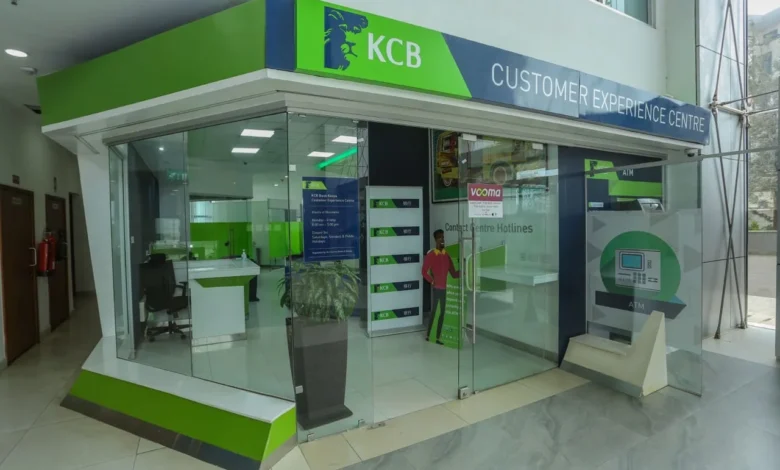
KCB Bank has rolled out a new way of calculating interest on loans, becoming the first major bank in Kenya to adopt the Central Bank of Kenya’s revised Risk-Based Credit Pricing Model (RBCPM). This change affects how affordable your loan will be and how easy it will be for you to qualify. Instead of getting lost in technical banking language, here’s what KCB new loan pricing actually means for your day-to-day borrowing power.
Your interest rate now depends more on YOU
Previously, many loans were tied to internal bank base rates that most customers never truly understood. Under the new system, KCB will calculate your loan rate using a combination of a market-based rate called KESONIA (Kenya Shilling Overnight Interbank Average) and a personal risk score known as “K”.
Think of KESONIA as the general price of money in Kenya, influenced by how banks lend to each other on a daily basis. The second part, your risk score, reflects how the bank views you as a borrower. This is based on your income stability, repayment history, existing debts and overall financial consistency. Simply put, the more reliable you appear financially, the cheaper your loan is likely to be.
This is the biggest shift behind KCB new loan pricing: your personal financial behaviour now plays a much bigger role in determining how much you pay and how much you can borrow.
How this affects your actual borrowing power
For some Kenyans, this new model could unlock better access to credit. If you have a history of paying loans on time, maintain stable income or run a business with predictable cash flow, the bank may view you as low risk. That works in your favour, potentially allowing you to qualify for larger loan amounts, enjoy slightly lower interest rates and experience smoother approval processes.
On the other hand, borrowers with irregular income, missed repayments or multiple unpaid loans may find the system less forgiving. In these cases, the bank will consider the risk higher, which can lead to more expensive loans, reduced loan limits or tighter approval conditions. For the many Kenyans who have been found to default on KES 1,000 loans, this change may prove to be a pain in the neck.
What this means in practice is simple: access to credit will feel more personalised. Your borrowing capacity will increasingly reflect your financial discipline rather than just your salary or job title.
What happens if you already have a KCB loan?
If you’re currently repaying a variable-rate loan with KCB, nothing changes today. However, this will not remain the case forever. By February 28, 2026, all existing variable-rate loans must migrate to the new pricing system as directed by CBK.
When that transition happens, your loan will be reassessed under the new model. Your monthly repayment could go up or down depending on how the bank evaluates your risk profile at that time, as well as prevailing market conditions. This means the way you manage your repayments between now and then will play a major role in determining how favourable your future terms will be.

What changes for new loan applicants
From December 1, 2025, anyone applying for a new variable-rate loan at KCB will be assessed using this personalised risk-based system from the start. Instead of a broadly applied rate, each borrower will receive pricing that reflects their individual financial behaviour and risk profile. Alongside this, customers will see clearer breakdowns of interest, fees and the total cost of credit, making it easier to understand what they are committing to.
This means there will not only be fewer surprises, but also fewer hiding places for risky borrowing habits.
Will loans become cheaper or more expensive?
The short answer is: it depends on you.
This model does not automatically make loans cheaper or more expensive across the board. Instead, it rewards borrowers who demonstrate good financial discipline, while those with poor repayment habits or unstable income may feel the cost of borrowing rise. In this way, affordability becomes less about the bank’s generosity and more about your financial track record.
The practical takeaway for everyday Kenyans
KCB new loan pricing places your financial habits at the centre of your borrowing future. It shifts the system from one-size-fits-all lending to a more personalised approach where trustworthiness matters more.
For borrowers who want to remain competitive under this system, the message is clear: consistent repayments, controlled borrowing and clean financial records are no longer optional. They directly influence your ability to access affordable credit.
The real impact of this change is not just in how loans are priced, but in how Kenyans must now approach borrowing itself. Yes, going forward, borrowing is no longer just about whether you qualify on paper, but whether your financial history proves you can be trusted.
For many Kenyans, the key question will no longer be Can I get a loan? but rather How does my financial behaviour shape what I can afford to borrow?
That, ultimately, is what KCB new loan pricing means for your lending capacity.







